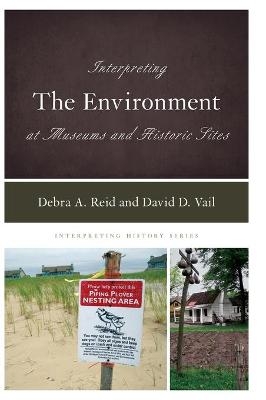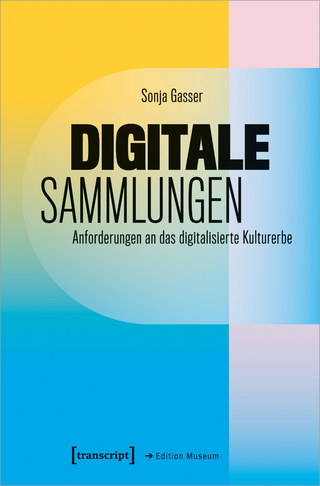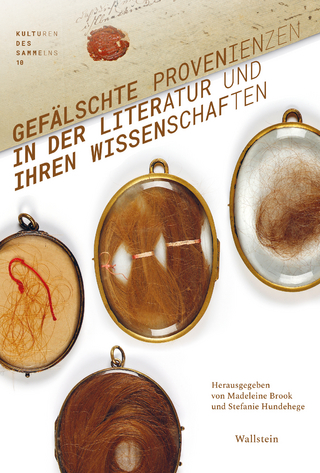
Interpreting the Environment at Museums and Historic Sites
Rowman & Littlefield (Verlag)
978-1-5381-1548-0 (ISBN)
State and local history collections provide a foundation for telling stories of the ways that humans have interacted with their environments over time, changing them, destroying them, conserving them, sustaining them. This book re-focuses thinking about the environment to thinking from the perspective of place and time, and people within that place-time continuum. The book provides a primer on “major problems” in researching and thinking about the environment. It addresses human perspectives on land distribution (Indian compared to English, Spanish, French approaches), the range of land use from conservation to exploitation, the disconnect between garbage and reduce-reuse-recycle campaigns; the histories of environmental movements and back to the land movements and their consequences, and the different experiences that become evidence when research documents race, class, gender and ethnicity in one place over time. The book moves beyond “nature,” distinguishing between natural environments and human-manipulated environments and ecosystems. Both have relevance to "interpreting the environment at museums and historic sites." It proposes a multi-disciplinary approach that requires expertise in the Humanities as well as the sciences and social sciences to best understand space and place over time. It incorporates case studies of the theory and method in relation to human goals – creating working environments, getting water, growing food, traveling and trading, building things, and preserving remarkable natural landscapes.
Interpreting the Environment at Museums and Historic Sites is for anyone who wants to better understand the environment that surrounds us and sustains us, who wants to become a better steward of that environment, and who wants to share lessons learned with others. The process starts by focusing attention on the environment – the physical space that constitutes the largest three-dimensional object in museum collections. It involves conceptualizing spaces and places of human influence; spaces that contain layer upon layer documenting human struggles to survive and thrive. This evidence exists in natural environments as well as the city center. The process continues by adopting an environment-centric view of the spaces destined to be interpreted. This mind-set forms the basis for devising research plans to document the ways humans have changed, destroyed, conserved and sustained spaces over time, and the ways that the environment reacts. Interpretation built on evidence, then becomes the basis for cross-disciplinary engagement with the environment.
Debra A. Reid, PhD, is curator of agriculture and the environment at The Henry Ford. She saw the landscape through new eyes after earning minor in Historical Geography at Southeast Missouri State University, studying with Michael Roark. She completed a minor field in Geography, studying with Peter Hugill, and her PhD in History at Texas A&M University. She taught in the Department of History at Eastern Illinois University from 1999 through 2016 before joining The Henry Ford. David D. Vail, PhD, has training in environmental history, agricultural history, and science and technology, earning a PhD at Kansas State University. He is assistant professor in the Department of History at the University of Nebraska at Kearney. His book, Chemical Lands: Pesticides, Aerial Spraying, and Health in North America’s Grasslands since 1945 (University of Alabama Press, 2018) is part of the NEXUS Series: New Histories of Science, Technology, the Environment, Agriculture, and Medicine). He is book review editor for The Public Historian (National Council on Public History), and a member of the editorial committee for Agricultural History.
Contents
Foreword by John C.F. Luzader
Preface
Acknowledgments
Part 1: A Primer on the Environment, Cultural Heritage, and History Interpretation
Chapter 1: Exploring Environmental History
Chapter 2: Thinking Historically about the Environment
Chapter 3: Constructing Stories about Humans and the Environment
Part 2: Telling Stories about Humans and Their Environments: Topics and Practice
Chapter 4: Creating Working Environments
Chapter 5: Getting Water
Chapter 6: Generating and Harnessing Power
Chapter 7: Growing Food
Chapter 8: Traveling and Trading
Chapter 9: Building Things
Chapter 10: Preserving and Conserving Natural Landscapes
Conclusion
Bibliographic Essay
Timeline of Environmental Ideas, Policies, and Legislation
About the Authors
| Erscheinungsdatum | 21.10.2019 |
|---|---|
| Reihe/Serie | Interpreting History |
| Verlagsort | Lanham, MD |
| Sprache | englisch |
| Maße | 186 x 262 mm |
| Gewicht | 689 g |
| Themenwelt | Kunst / Musik / Theater |
| Geisteswissenschaften ► Geschichte ► Hilfswissenschaften | |
| Naturwissenschaften ► Biologie ► Ökologie / Naturschutz | |
| Wirtschaft ► Betriebswirtschaft / Management | |
| ISBN-10 | 1-5381-1548-4 / 1538115484 |
| ISBN-13 | 978-1-5381-1548-0 / 9781538115480 |
| Zustand | Neuware |
| Haben Sie eine Frage zum Produkt? |
aus dem Bereich


